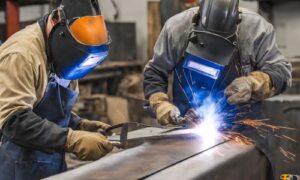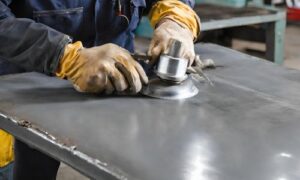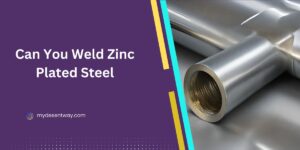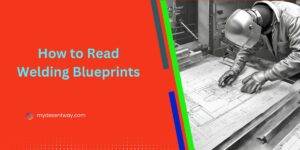Table of Contents
JB Weld is a popular epoxy adhesive known for its strength and versatility. It is commonly used for bonding various materials together, including metal, wood, plastic, and ceramics. One aspect that users often consider is the drying time of the JB Weld. Waiting for the adhesive to dry can be time-consuming, especially when you’re working on a project with tight deadlines. In this article, we will explore several effective methods to speed up JB Weld dry time, allowing you to complete your projects faster.
How to speed up jb weld dry time
To speed up JB Weld dry time, ensure a clean surface, optimize temperature and humidity, consider using accelerators or additives designed for quicker drying, and explore alternative methods like applying gentle heat.
1. Factors Affecting JB Weld Drying Time
The composition of JB Weld, comprising epoxy resin and hardener, contributes significantly to its curing time. Moreover, external factors like temperature, humidity, and application techniques play a pivotal role in determining how quickly it dries.
Tips for Speeding Up JB Weld Drying
To accelerate JB Weld’s drying, meticulous surface preparation is key. Ensuring a clean and dry surface enhances adhesion and expedites the drying process. Additionally, optimizing environmental conditions, such as maintaining an ideal temperature and humidity level, significantly affects the drying time.
2. JB Weld Drying Process
Before we delve into expediting the JB Weld drying time, it’s important to understand the basic process. JB Weld consists of two components – a resin and a hardener. When these two components are mixed together, a chemical reaction begins, causing the adhesive to cure and harden over time. During the curing process, the solvents in JB Weld start to evaporate, resulting in a solid bond.
3. How to Accelerate JB Weld Dry Time
-
Ensure Proper Mixing
To achieve optimal results with JB Weld, it is crucial to mix the resin and hardener thoroughly. Inadequate mixing can lead to uneven curing and extended drying time. Follow the manufacturer’s instructions carefully and make sure the two components are mixed in the recommended ratio. Use a clean mixing surface and a stir stick to achieve a homogenous mixture.
-
Apply Thin Layers
Applying thin layers of JB Weld can significantly reduce the drying time. Thin layers have a larger surface area, allowing the solvents to evaporate more quickly. When applying the adhesive, use a brush or spatula to spread a thin and even layer over the surface. Avoid applying thick layers as they tend to take longer to dry and may result in uneven curing.
-
Use Heat to Expedite Drying
Heat can expedite the drying process of the JB Weld. However, it’s important to note that excessive heat can compromise the adhesive’s strength. Before applying heat, ensure that the materials being bonded can withstand it. You can use a heat gun or a hairdryer set on low heat to gently warm the bonded area. The heat helps accelerate the evaporation of solvents, thus reducing the drying time.
-
Utilize Air Circulation
Improving air circulation around the adhesive can facilitate faster drying. Place the bonded object in a well-ventilated area or use a fan to create airflow. The movement of air promotes the evaporation of solvents, speeding up the drying process. Remember to position the fan at a safe distance to prevent blowing dust or debris onto the adhesive.
-
Consider Adding Accelerators
JB Weld accelerators are specially designed products that can reduce the drying time of the adhesive. These accelerators are mixed with JB Weld and help promote faster curing. Follow the manufacturer’s instructions when using accelerators, as different products may have varying application methods and drying times.
4. Common Mistakes to Avoid
When attempting to speed up JB Weld dry time, it’s important to avoid certain mistakes that can hinder the process. Here are a few common errors to steer clear of:
- Applying JB Weld in thick layers
- Insufficient mixing of resin and hardener
- Using excessive heat may damage the materials
- Failing to provide proper air circulation
- Not following the manufacturer’s instructions when using accelerators
By avoiding these mistakes, you can ensure that JB Weld dries quickly and efficiently.
jb weld cure time
The cure time for JB Weld varies depending on the specific product and application. In general, most JB Weld products reach a functional cure in about 4-6 hours. However, it is essential to note that the full cure time can take up to 24 hours or more, depending on factors like temperature and humidity. For optimal results, it’s advisable to follow the manufacturer’s instructions provided on the product packaging.
Conclusion
JB Weld is an excellent adhesive for various bonding applications, but waiting for it to dry can be time-consuming. By following the techniques mentioned in this article, you can effectively speed up the drying time of JB Weld. Remember to mix the components thoroughly, apply thin layers, and consider using heat, air circulation, or accelerators as appropriate. By doing so, you’ll be able to complete your projects faster without compromising the strength and quality of the adhesive bond.
FAQs
Does humidity affect JB Weld drying time?
Yes, high humidity can prolong drying time. It’s advisable to work in a controlled environment to expedite the process.
Are there any risks associated with accelerating JB Weld drying?
Accelerating drying might compromise the strength of the bond. It’s essential to follow recommended techniques to avoid any adverse effects.
Can I sand JB Weld before it’s completely dry?
It’s best to wait until JB Weld is fully cured before sanding to ensure a smooth finish and optimal strength.
What’s the ideal temperature for JB Weld to dry quickly?
Temperatures around 70-90°F (21-32°C) are optimal for speeding up the drying process of JB Weld.
Can I use a hairdryer to speed up JB Weld drying?
While it’s possible, using a hairdryer might not evenly distribute heat and could affect the final bond strength. Exercise caution if opting for this method.












5 thoughts on “How to Speed Up Jb Weld Dry Time”